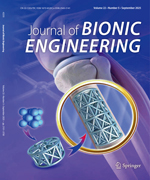Mimicking compositional and constructional features of the extracellular matrix (ECM) is an effective parameter in improving the biological response of biomaterials. In this regard, carbon nanotube (CNT) and gelatin were added to magnesium-calcium phosphate cement (CNG) to mimic fibrillar construction and organic composition of ECM, respectively, besides the CNG performance was compared with the plain and CNT-reinforced cement. Cementation behavior of the cements was investigated by evaluating their setting time, cement composition variation during setting, and viscosity fluctuation. Furthermore, compressive strength, degradation, and cell response of the cements were compared. Adding 5 wt.% gelatin reduced setting time about 60%, because of gel formation, not due to struvite precipitation. Moreover, the gelatin decreased compressive strength by about 20%. Although gelatin decreased compressive strength, the strength remained in the range attributed to trabecular bone. All the types of cement indicated shear thinning behavior that made their injectability feasible. Compared to other types of cement, CNG enhanced proliferation and differentiation of mesenchymal stem cells besides faster degradation, nontoxicity and suitable cell adhesion. Hence, mimicking features of CNG enhanced osteoconductivity and osteoinductivity of the cement compared to the plain one.

 Table of Content
Table of Content
 Table of Content
Table of Content